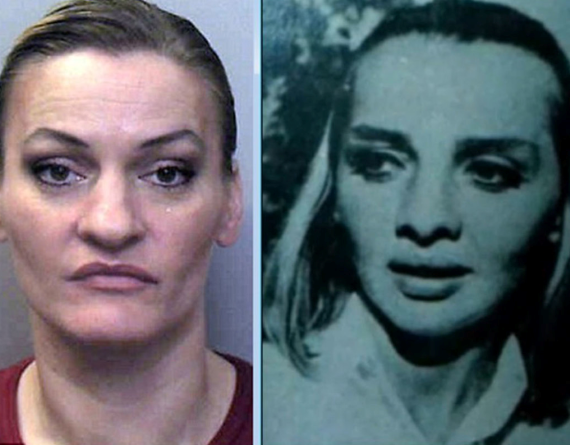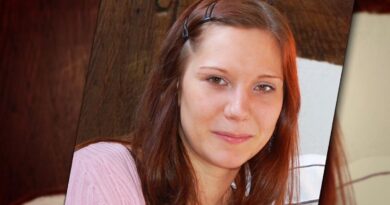The Eriksson Twins Ursula and Sabina Erractic Behavior in England
In May 2008, an inexplicable sequence of events unfolded in England that left authorities, psychologists, and the public grappling for answers. The Eriksson twins, Ursula and Sabina, two seemingly ordinary Swedish women, suddenly engaged in bizarre, dangerous, and violent behavior, which resulted in one of them attempting suicide multiple times and the other committing murder.
Captured on CCTV footage and broadcast to millions, their synchronized erratic actions—running into oncoming traffic on the M6 motorway and showing almost supernatural resilience to pain—raised deep concerns about the limits of human psychology and shared mental illness. Sabina Eriksson’s subsequent murder of a kind-hearted Good Samaritan, Glenn Hollinshead, only deepened the mystery surrounding their case.
This article explores the background, timeline, psychological implications, legal proceedings, and the lasting mystery of the Eriksson twins’ behavior.
Background of the Eriksson Twins
Ursula and Sabina Eriksson were born on November 3, 1967, in Sunne, Sweden. They grew up in a seemingly normal household alongside an older sister and an older brother. Very little is publicly known about their childhood, early psychological state, or family dynamics, making it difficult to determine whether any history of mental illness existed before the events of 2008.
By 2008, the twins were living separate lives:
- Ursula had moved to the United States several years earlier.
- Sabina was residing in Mallow, County Cork, Ireland, with her partner and two children.
There were no known criminal records or past incidents of mental health crises before their sudden and unexplained reunion in May 2008.
The Mysterious Journey from Ireland to England
On May 16, 2008, Ursula traveled from the United States to visit Sabina in Ireland. Within just a few hours, the sisters left Ireland without informing anyone, taking a ferry from Dublin to Liverpool, England, in the early hours of May 17.
The reason for their sudden departure remains unknown. However, once in Liverpool, their behavior became increasingly erratic:
- They went to St. Anne Street Police Station, where Sabina claimed that her partner was abusive and that she feared for her children’s safety.
- Irish authorities checked on the family and found no evidence of abuse. Sabina’s partner was reportedly confused, stating that they had an argument, but she left unexpectedly with her sister without explanation.
After leaving the police station, the twins purchased coach tickets to London for no apparent reason.
Erratic Behavior on the National Express Coach
At 11:30 AM on May 17, Ursula and Sabina boarded a National Express coach bound for London. However, during the journey, passengers and the driver noticed their unsettling behavior:
- They were clutching their bags tightly, refusing to place them in the luggage hold.
- They whispered to each other frantically, appearing highly agitated.
- The bus driver became concerned and, fearing they might be carrying dangerous items, made an unscheduled stop at Keele Service Station in Staffordshire.
When the driver asked to search their bags, the twins refused and became increasingly aggressive. As a result, they were removed from the coach and left stranded at the service station.
The station manager noticed their strange behavior and feared they might have a bomb, prompting her to alert the police.
Officers from Staffordshire Police arrived, but after brief questioning, they deemed the twins harmless and left the scene.
What happened next shocked the nation.
The Infamous M6 Motorway Incident
Shortly after being left at the service station, the Eriksson twins were spotted walking along the M6 motorway on foot—an illegal and extremely dangerous action.
At 3:20 PM, highways agency officers spotted them and notified motorway police, who dispatched patrol cars to the scene. As officers approached, the twins suddenly ran directly into traffic, causing immediate chaos:
- Ursula ran first and was struck by a lorry, crushing her legs.
- Sabina followed and was hit by a car at high speed, flipping over the hood.
Incredibly, both women survived. However, their reactions baffled authorities:
- Ursula screamed at officers to leave her alone, despite having severely broken legs.
- Sabina, despite being knocked unconscious, suddenly woke up and attacked officers, punching one in the face and trying to escape back into traffic.
Six officers and several bystanders were needed to restrain her.
Everything was captured on CCTV and filmed by a BBC documentary crew working on a show called “Motorway Cops.”
Authorities initially suspected drug use, but medical tests later revealed no alcohol or drugs in their system.
Sabina’s Release and the Murder of Glenn Hollinshead
While Ursula was hospitalized with crushed legs, Sabina was discharged after only five hours and taken into police custody.
Inexplicably, she was not given a full psychiatric evaluation.
On May 19, she was released onto the streets of Stoke-on-Trent, carrying only a plastic bag containing cash, a laptop, and some clothes.
That evening, two local men, Glenn Hollinshead and Peter Molloy, encountered Sabina. Seeing that she looked lost and confused, they offered her a place to stay.
- Glenn was a 54-year-old former RAF worker and a kind-hearted man.
- Peter later recalled Sabina behaving erratically, peeking out the window and claiming the men’s cigarettes were “poisoned.”
- Despite Peter’s unease, Glenn insisted on helping her.
The following evening, without warning, Sabina stabbed Glenn five times, killing him.
She then fled the house, hitting herself in the head with a hammer and attacking a passerby with a roof tile.
She ran to a bridge and jumped off, falling 40 feet onto the A50 motorway, but survived yet again.
Arrest, Trial, and Unanswered Questions
Sabina was arrested and later charged with manslaughter due to diminished responsibility.
Psychiatrists diagnosed her with folie à deux (shared psychosis), suggesting she absorbed her sister’s delusions.
She was sentenced to five years in prison but only served 2.5 years before being released in 2011.
Neither Sabina nor Ursula has been seen or heard from publicly since.
Conclusion
The Eriksson twins’ case remains one of the most inexplicable true crime stories ever recorded.
From uncontrollable, synchronized behavior on the motorway to Sabina’s shocking murder of an innocent man, their actions continue to baffle experts and the public alike.
Whether it was a severe case of shared psychosis, a psychotic break, or something even stranger, the truth behind their behavior remains a chilling mystery.
Discover more from City Towner
Subscribe to get the latest posts sent to your email.




